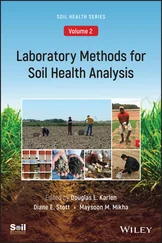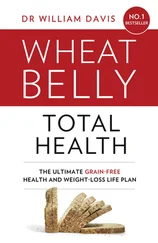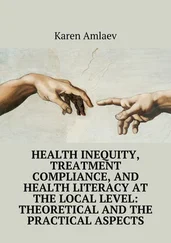Soil Health Analysis, Set
Здесь есть возможность читать онлайн «Soil Health Analysis, Set» — ознакомительный отрывок электронной книги совершенно бесплатно, а после прочтения отрывка купить полную версию. В некоторых случаях можно слушать аудио, скачать через торрент в формате fb2 и присутствует краткое содержание. Жанр: unrecognised, на английском языке. Описание произведения, (предисловие) а так же отзывы посетителей доступны на портале библиотеки ЛибКат.
- Название:Soil Health Analysis, Set
- Автор:
- Жанр:
- Год:неизвестен
- ISBN:нет данных
- Рейтинг книги:3 / 5. Голосов: 1
-
Избранное:Добавить в избранное
- Отзывы:
-
Ваша оценка:
- 60
- 1
- 2
- 3
- 4
- 5
Soil Health Analysis, Set: краткое содержание, описание и аннотация
Предлагаем к чтению аннотацию, описание, краткое содержание или предисловие (зависит от того, что написал сам автор книги «Soil Health Analysis, Set»). Если вы не нашли необходимую информацию о книге — напишите в комментариях, мы постараемся отыскать её.
Soil Health Analysis, Set — читать онлайн ознакомительный отрывок
Ниже представлен текст книги, разбитый по страницам. Система сохранения места последней прочитанной страницы, позволяет с удобством читать онлайн бесплатно книгу «Soil Health Analysis, Set», без необходимости каждый раз заново искать на чём Вы остановились. Поставьте закладку, и сможете в любой момент перейти на страницу, на которой закончили чтение.
Интервал:
Закладка:
Table of Contents
1 Cover
2 Volume 1 Volume 1
Series Page Title Page Copyright Page Dedication Page Foreword References Preface References 1 Soil Health: An Overview and Goals for These Volumes Synopsis of Two‐Volume Book Introduction Summary and Conclusion References 2 Evolution of the Soil Health Movement Introduction Pre‐20 thCentury Soil Awareness From 1900 to 1970 From 1970 to 2000 – Soil Quality Emerges 21 stCentury Developments in Soil Health References 3 The Utility and Futility of Soil Health Assessment Chapter Overview Introduction Analytical Methods Soil Health Limitations Conclusions References 4 Metadata: An Essential Component for Interpreting Soil Health Measurements Methods and Frequency Discussion Summary Acknowledgments References 5 Soil Health Assessment of Agricultural Lands Summary Overview of Assessments Assessment Frameworks Evolving Soil Health Assessment Activities References 6 Soil Health Assessment of Forest Soils Introduction Ecosystem Examples Conclusion: Criteria and Indicators for Monitoring Forest Soil Health Summary Acknowledgments References 7 A Risk‐Based Soil Health Approach to Management of Soil Lead Introduction Urban Soil Lead Assessment and Human Exposure Soil Health Based Assessment and Management of Soil Lead Practical Assessment of Soil Lead Summary and Conclusions References 8 The Future of Soil Health Assessments: Tools and Strategies Introduction References Epilogue References
3 Volume 2 Series Page Title Page Copyright Page Dedication Page Foreword References Preface References 1 Laboratory Methods for Soil Health Assessment: An Overview How Can a Farmer Assess Soil Health in the Field? What Do Researchers Need, and Can They Reach Consensus? What Do Commercial Analytical Laboratories Need? Summary and Conclusions References 2 Sampling Considerations and Field Evaluations for Soil Health Assessment Introduction Soil Variability Sampling Considerations Sample Collection, Processing, and Archival Field Evaluations Summary Acknowledgments References 3 Soil Organic Carbon Assessment Methods Summary Introduction References 4 Water‐Stable Soil Aggregate Assessment Introduction Soil sampling and preparation Water‐stable aggregation (WSA) Materials and Procedures Aggregate Sieving Apparatus Construction Supplies Water‐stable aggregate size distribution with the slaking method Sand‐Free Water‐Stable Soil Aggregates Supplies and procedure for sand content determination Aggregate mean weight diameter Summary References 5 Determination of Infiltration Rate and Bulk Density in Soils Soil Infiltration Soil Bulk Density Acknowledgments References 6 Chemical Reactivity: pH, Salinity and Sodicity Effects on Soil Health Introduction Natural Soil Salinization Processes Salt Accumulation and Solute Transport Mechanisms Anthropogenic Soil Salinization Processes Chemical Characterization of Salinity Sources Soil Chemistry, Biota and Ecosystem Services Chemistry Effects on Soil Biota Habitat Heterogeneity and Soil Microbial Diversity Agricultural Ecosystems: Degradation Prevention and Conservation Soil Health Indices Technological Advances in the Study of Soil Biogeochemical Interfaces Conclusions References 7 Nutrient Availability: Macro‐ and Micronutrients in Soil Quality and Health Introduction Conclusions References 8 Assessment and Interpretation of Soil‐Test Biological Activity Introduction Literature Review of Indicator and Method Method Interpretations References 9 Permanganate Oxidizable Carbon Soil Organic Carbon Pools Indicators of Biologically Active soil Carbon Permanganate‐Oxidizable Carbon Procedure to Quantify Poxc References 10 Is Autoclaved Citrate‐Extractable (ACE) Protein a Viable Indicator of Soil Nitrogen Availability? Introduction Nitrogen Availability Indices Autoclaved Citrate‐Extractable Protein Soil Sampling Considerations Methods and Materials for Protein Quantification Summary and Conclusions References 11 Metabolic Activity– Enzymes Introduction Enzymes as Soil Health Indicators Soil Sampling and Handling Method Interpretation– Putting Enzyme Measurements into Context References 12 PLFA and EL‐FAME Indicators of Microbial Community Composition Introduction PLFA Using the Buyer and Sasser (2012) High‐throughput Extraction Method Paired with the MIDI‐Sherlock System EL‐FAME Extraction Paired with the MIDI‐Sherlock System Tips and Tricks for FAME Extraction and Analysis Calculations and Interpretation of FAME Data Management Implications References 13 Microbial Community Composition, Diversity, and Function Introduction Methods for Identifying and Quantifying Microbial Communities Criteria for Method Selection Selected Method Protocol Analysis Section References Epilogue References
4 End User License Agreement
List of Tables
1 Volume 1 - Chapter 3 Table 3.1 Timeless generic strategies for improving soils. Table 3.2 Selected NRCS conservation practices identified as also having a so... Table 3.3 Categories of soil health tests, each with unique characteristics b... Table 3.4 Potential soil health tests for evaluating various natural resource...
2 Volume 1 - Chapter 4 Table 4.1 Metadata related to temporal and spatial properties of soil health.
3 Volume 1 - Chapter 6Table 6.1 Examples of soil physical, chemical, and biological properties that...Table 6.2 Forest soil sampling intensity of FIA plots by forest‐type group.
4 Volume 1 - Chapter 7Table 7.1 Comparison of international residential and industrial lead (Pb) soil ...Table 7.2 Recommendations for food and soil management practices to reduce hu...Table 7.3 Published in vivo‐in vitro correlation (IVIVC) studies evaluating t...Table 7.4 Soil health practices to manage soil lead.Table 7.5 Comparison of methods used to measure or estimate total Pb.Table 7.6 Soil health practices to manage Pb exposure.Table 7.7 Comparison of in vitro bioaccessible soil lead reductions in respon...
5 EpilogueTable E.1 Selected quotes advocating for recognition and better management of...Table E.2 Selected Native American proverbs reflecting upon land and soil res...
6 Volume 2 - Chapter 1Table 1.1 Tier 1 Soil Health Indicators and Methods to be Assessed.Table 1.2 Tier 2 Soil Health Indicators and Methods to be Assessed
7 Volume 2 - Chapter 2Table 2.1 Synthesis of select resources addressing sampling considerations an...Table 2.2 Suggested minimum metadata for site characterization.Table 2.3 Definitions and attributes of different soil sampling designs.
8 Volume 2 - Chapter 3Table 3.1 Advantages and disadvantages of the most common methods for measuri...
9 Volume 2 - Chapter 6Table 6.1 Guidelines for Interpretations of Water Quality for Irrigation.Table 6.2 USDA‐NRCS Soil pH Classifications (Soil Survey Manual, 1993).
10 Volume 2 - Chapter 7Table 7.1 Average micronutrient concentrations in plants and the range of tot...Table 7.2 US state by state soil extractants used to determine soil micronutr...
11 Volume 2 - Chapter 8Table 8.1 Compilation of studies reporting associations between the flush of ...Table 8.2 Compilation of studies reporting associations between the flush of ...
12 Volume 2 - Chapter 9Table 9.1 Permanganate‐oxidizable C (POXC) coefficients of variation (CV) of ...
13 Volume 2 - Chapter 10Table 10.1 Advantages and disadvantages of selected soil N methods and potent...
14 Volume 2 - Chapter 11Table 11.1 Enzyme activities from selected studies across management and regi...Table 11.2 Description of the enzyme assay procedure and reagents needed for ...Table 11.3 Approaches for interpreting results from enzyme activities (EAs) a...
15 Volume 2 - Chapter 12Table 12.1 Comparison of PLFA and EL‐FAME methods.Table 12.2 Key PLFA microbial group assignments used by the MIDI Sherlock Sys...
16 Volume 2 - Chapter 13Table 13.1 Taxonomic and functional indicators of various soil functions that...
Читать дальшеИнтервал:
Закладка:
Похожие книги на «Soil Health Analysis, Set»
Представляем Вашему вниманию похожие книги на «Soil Health Analysis, Set» списком для выбора. Мы отобрали схожую по названию и смыслу литературу в надежде предоставить читателям больше вариантов отыскать новые, интересные, ещё непрочитанные произведения.
Обсуждение, отзывы о книге «Soil Health Analysis, Set» и просто собственные мнения читателей. Оставьте ваши комментарии, напишите, что Вы думаете о произведении, его смысле или главных героях. Укажите что конкретно понравилось, а что нет, и почему Вы так считаете.












